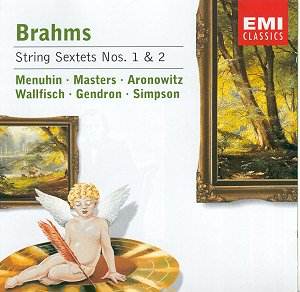 Composer: Anton Bruckner
Composer: Anton Bruckner
Works: Symphony No. 7
Performers: Chicago Symphony Orchestra; Daniel Barenboim, conductor
Recording: 1980, Chicago
Label: DG ELOQUENCE 469 761-2 [66.36]
Anton Bruckner’s Symphony No. 7, composed in the wake of the tumultuous changes of the late 19th century, stands as a monumental achievement within the symphonic canon. Often regarded as a turning point in Bruckner’s oeuvre, it showcases his unique blend of lyrical melodies and grand architectural forms, underscored by a deep spirituality that resonates through its expansive movements. With this recording featuring the Chicago Symphony Orchestra under the baton of Daniel Barenboim, listeners are offered a compelling interpretation that, while not without its caveats, remains a significant contribution to the ever-growing catalog of Bruckner performances.
Barenboim’s interpretation of the First Movement, marked Allegro moderato, is characterized by a brisk tempo that imbues the lush opening theme with an invigorating vitality. This choice facilitates a vigorous interplay of thematic development, allowing the more forceful rhythmic passages to emerge with exciting clarity. Yet, there are moments during the recapitulation where one feels that the lyrical beauty of the principal theme could have been more fully realized, possibly through a slight deceleration, giving it the chance to shine with greater intensity. The overall effect is one of energetic drive, but it occasionally sacrifices the deep expressivity inherent to Bruckner’s music.
The slow movement, Adagio, presents a similar dichotomy. While the orchestral playing is undeniably rich and sonorous, conveying the movement’s profound emotional weight, Barenboim’s tempo choices lead to a reading that skews toward the dramatic rather than the transcendental. The architecture of the movement is expertly managed, yet a slower, more measured pulse would afford the music the necessary breadth to enhance its nobility. This tension between dramatic urgency and spiritual depth is a recurring theme throughout the performance.
In stark contrast, the Scherzo emerges as a highlight of this recording. The exhilarating thrust of the rhythms is executed with exhilarating precision, and the first trumpet, in particular, asserts itself with a fierceness that propels the movement forward. The palpable excitement here showcases Barenboim’s adeptness at drawing out the orchestra’s vigor, making for a thrilling listening experience. However, the Finale, while lively and purposeful, suffers from similar issues as earlier movements; the pacing could allow for a more profound unfolding of the material. As it stands, the climactic moments do not quite reach the overwhelming heights one might anticipate from this symphonic titan.
The technical aspects of the recording merit mention, particularly the sound engineering by Deutsche Grammophon, which captures the orchestral colors with commendable clarity. However, the absence of insert notes in the DG Eloquence series strikes as a missed opportunity to provide listeners with context and background, a false economy that detracts from the overall presentation. The resultant sound is polished yet lacks some of the warmth and depth that one might find in more recent recordings by other notable Bruckner interpreters, such as Herbert von Karajan or Simon Rattle, who have approached Bruckner’s symphonies with an emphasis on both grandeur and introspection.
This recording of Bruckner’s Seventh Symphony, while not definitive, is an engaging interpretation that offers a robust performance from the Chicago Symphony Orchestra under Barenboim’s direction. It provides a solid listening experience for both Bruckner enthusiasts and newcomers alike, though it occasionally falls short of the more transcendent qualities that one might hope for in such a monumental work. The energetic performances and the orchestra’s virtuosic execution ensure that this recording will delight many, even as it invites comparisons to other interpretations that may more fully capture the symphony’s spiritual essence.



